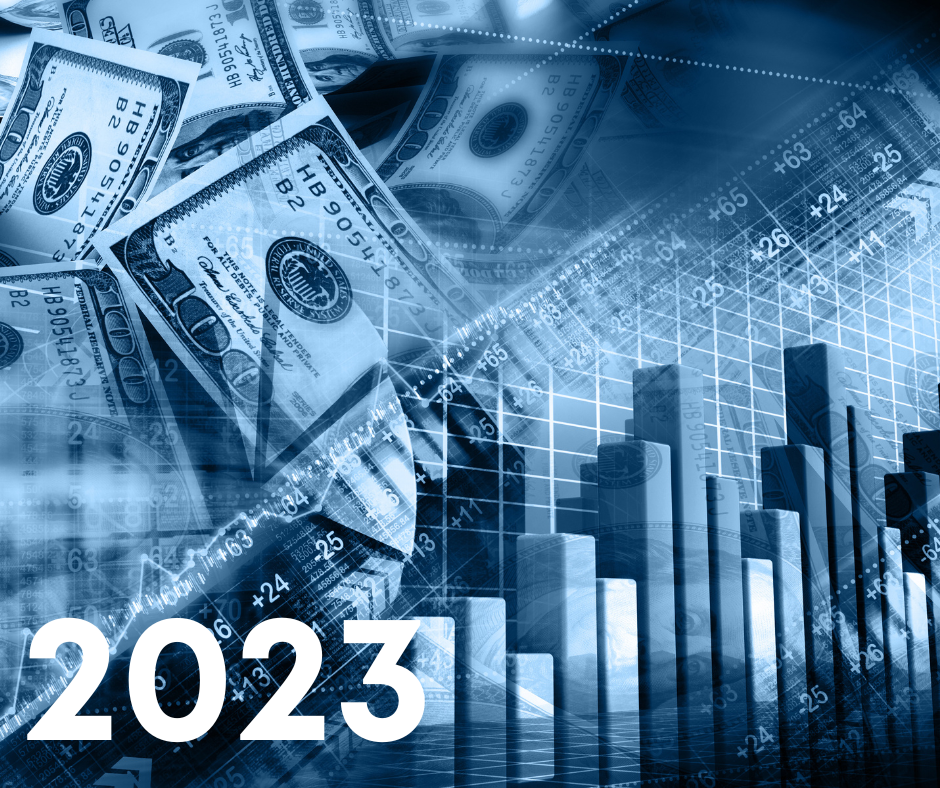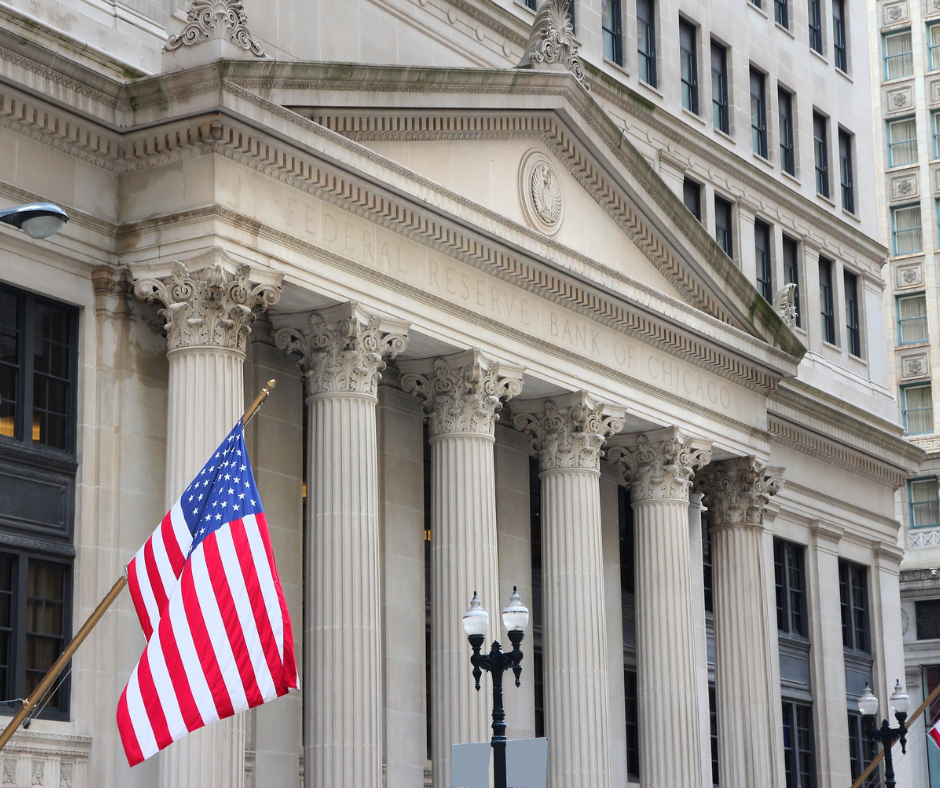
THE MENSER REAL ESTATE GROUP BLOG
Another Mega Interest Rate Hike is Coming—What this Means for Your Finances
Americans should prepare their finances for even higher interest rates this year as the Federal Reserve continues its fight against inflation.
Although the Fed has increased its benchmark short-term fed funds rate by 3% this year, with the last three rate hikes at a whopping 75 basis points each, consumer inflation continues to linger near a 40-year high.
It also is expected to telegraph more rate hikes to come as it focuses on combating inflation, so consumers should expect their costs to head even higher and job losses to mount as economic growth slows.
Although the Fed doesn’t directly control consumer interest rates, its rate increases ripple through the economy and ultimately, hit businesses and consumers and slow demand and inflation.
“Given the environment of rising rates and a slowing economy, the financial steps for households to take are boosting emergency savings, paying down high-cost debt, and maintaining contributions into, and a long-term perspective on, retirement accounts,” Greg McBride, Bankrate chief financial analyst, said.
How high will interest rates go?
The Fed's expected to raise rates Wednesday by 75 basis points, which would mark the fourth consecutive increase of that size.
And likely that won't be the end. The Fed's year-end median fed funds forecast is 4.4% and 4.6% next year before heading lower, according to its economic projections. That means there’s likely another rate increase coming at the Fed meeting in December.
Economists generally expect the Fed to slow its rate hikes in December with a half-point rise to get inflation closer to its 2% target, but another 0.75% hike isn’t out of the question. Deutsche Bank analysts, for now, expect a fifth consecutive supersized 0.75% rate increase in December.
In September, overall annual inflation dipped to an 8.2% pace from August's 8.3%, but the core rate without the volatile food and energy sectors rose 6.6%, from 6.3% the prior month and the largest increase since August 1982. Both topped economists' mean forecast and unleashed worries that inflation's getting entrenched in areas that'll be harder to control if the Fed doesn't act faster.
How does this affect my plans to buy a house?
Homeowners with existing fixed-rate mortgages won’t see any changes. But recent and prospective homebuyers are being socked by higher rates that take into account projected Fed increases through 2022.
"The speed at which mortgage rates have risen is more destabilizing than the actual level of rates,” Yelena Maleyev, KPMG economist, said. “We have seen mortgage rates higher than 7% before, but we never have seen rates double in a matter of months. “
The average rate for a 30-year fixed-rate mortgage in the week ended Oct. 21 was 7.16%, the highest rate since 2001, according to Mortgage Bankers Association (MBA).
That's dampened borrower demand for both mortgage purchases and refinances. For the week ending Oct. 21, mortgage applications fell 1.7% to the slowest pace since 1997, MBA said. Refinance applications were essentially unchanged, but purchase applications declined 2% to the slowest pace since 2015 and more than 40% behind last year’s clip, it said.
Economic Outlook for 2023
The International Monetary Fund predicts global growth will slow to 2.7% next year, 0.2 percentage points lower than its July forecast, and anticipates 2023 will feel like a recession for millions around the world.
Aside from the global financial crisis and the peak of the Covid-19 pandemic, this is "the weakest growth profile since 2001," the IMF said in its World Economic Outlook published Tuesday. Its GDP estimate for this year remained steady at 3.2%, which was down from the 6% seen in 2021.
"The worst is yet to come, and for many people 2023 will feel like a recession," the report said, echoing warnings from the United Nations, the World Bank and many global CEOs.
More than a third of the global economy will see two consecutive quarters of negative growth, while the three largest economies — the United States, the European Union and China — will continue to slow, the report said.
Why the Fall Housing Market Won't Be Great for Buyers—or Sellers
The housing market is having a bit of a Dr. Jekyll-Mr. Hyde moment.
On the one hand, buyers are finally getting some relief from the skyrocketing prices and break-neck selling speeds of the last two years. On the other, mortgage rates are soaring — reducing affordability and keeping would-be sellers on the sidelines.
The result is a market that’s better for some, worse for others and, well, not really ideal for anyone.
As Nik Shah, CEO of Home.com, puts it, “Buyers and sellers will both endure a tough fall housing market.”
He’s not wrong — but what exactly does “tough” look like? And will things improve or get worse as time goes on? Here’s a look at what’s in store for housing this fall.
Moderating home prices
Home prices have been on a steep runup since the early months of the pandemic. The median home price in the second quarter of 2020 was just $322,000, according to the U.S. Census Bureau. By the start of this year, it had surpassed $440,000 — an almost 37% increase in less than two years.
Fortunately, price growth appears to be slowing. Home prices were up 14% between September 2021 and September 2022, down from the 18% annual increase seen back in June.
According to housing experts, annual price growth should decelerate even more as 2022 comes to a close. Price declines, though, probably aren’t in the cards — at least in the next few months.
As Jonathan Miller, CEO of appraisal firm Miller Samuel Inc., explains, home prices tend to be “sticky on the downside” — meaning they take longer to come down than they did to go up.
“Buyers need to be patient,” Miller says. “Sellers have been in the driver’s seat and then some during the pandemic era and need time to adjust to the pivot in market conditions.”
As sellers start facing reality, price growth will decelerate faster and, by next year, could even decline. Over the next few years, prices could fall as much as 15% from their 2022 peak, according to Moody’s Analytics.
High mortgage rates
While lower prices are certainly something to look forward to, in the meantime, buyers have another challenge to overcome: much higher mortgage rates. The average rate on 30-year mortgage loans is now above 6.5%. We at UWL Rojo Mortgage team can still get rates in lower 6’s and sometimes highs 5 pending credit. The more than double the rates seen last year. By some projections, rates could reach as high as 8% by year’s end. Hurry and go to www.rojomortgage.com and get started to buying a house now The lower the rate the better vs a 10-15 percent dip in the housing price.
“With the Fed still working to bring inflation back down, all indications are that short-term rates will continue to climb, creating upward pressure on longer-term rates like mortgage rates,” says Danielle Hale, chief economist for Realtor.com. “This will mean that the cost of taking on a mortgage is likely to keep going up.”
Those are worrisome words, considering how much recent rate increases have already hurt affordability. On a median-priced home, the typical monthly payment is now up over 70% — or about $900—compared to just one year ago.
“Buyers have a lot of hurdles to get over,” says Daryl Fairweather, chief economist for real estate brokerage Redfin. “It’ll be easy to get an offer accepted on a house, but a lot of people just can’t even get past the point of affording the mortgage.”
Check out our loan options and call us with your questions, Rojo Mortgage Team, 916-548-3942.
10-year and 2-year Treasury yields fall as traders begin new quarter
The yields on the 10-year and 2-year treasuries fell on Monday as markets began a new quarter and investors digested manufacturing PMI data.
The benchmark 10-year Treasury was down 19 basis points at 3.611%. The yield on the policy-sensitive 2-year Treasury was at 4.062%, down by about 14 basis points.
Yields and prices have an inverted relationship. One basis point is equivalent to 0.01%.
Markets began the final quarter of the year on Monday, with investors still digesting the negative end to the third quarter that saw the Dow Jones Industrial Average, S&P 500 and Nasdaq Composite stumble.
A gauge on the U.S. manufacturing sector fell last month, indicating that economic activity in the space is close to contracting.
The Institute for Supply Management said Monday that its manufacturing PMI [fell to 50.9 in September] from 52.8 in August — barely in expansion territory. A print below 50 indicates contraction, and one above that level points to an expansion.
Several Federal Reserve speakers are also due to make comments. In remarks last week, the central bankers had struck a hawkish tone and broadly indicated that they would continue to fight persistently high inflation by hiking interest rates.
That has raised concerns about a recession among some investors who fear the central bank is hiking rates too quickly.
Scott Rojo and the Rojo Mortgage Team are here to help you navigate these times. Call our office at 916-548-3942. We're here to help!
New Projections by the Federal Reserve
The Federal Reserve, after chasing inflation for the better part of a year, will look ahead as far as 2025 in new projections this week that will show more fully the depth and length of the economic “pain” its policymakers expect to be needed to stop the current surge in prices.
The tale so far is not a pretty one. The pace of price increases, which by the Fed’s preferred measure are running at more than three times its 2% target, have hardly budged in the face of the most rapid set of U.S. interest rate increases in about 30 years.
The projections, due to be published alongside the Fed’s latest policy statement at 2 p.m. EDT (1800 GMT) on Wednesday, will show just how aggressively U.S. central bank officials feel interest rates must rise to respond to the inflationary wave, and what economic cracks they see appearing as a result in terms of slower growth or higher unemployment.
Hopes for a “soft landing,” marked by a slowdown in inflation toward the 2% target without a recession, may not be gone: Policymakers are unlikely to project an outright downturn even as the outlooks compiled each September extend an additional year, in this case through 2025.
Outside the Fed, however, there is a growing sense that the path to a soft landing is unlikely. Some analysts estimate the unemployment rate, which hit 3.7% in August, may need to rise as high as 7.5%.
Traders in contracts tied to the Fed’s benchmark overnight interest rate now expect that rate to end the year between 4.25% and 4.50% - 2 percentage points higher than where it is now and a level last seen in late 2007.
“The probability of a softish landing falls materially” after U.S. inflation data for August showed just how persistent rising prices have become, Evercore ISI Vice Chairman Krishna Guha wrote last week. “Even assuming...it is still possible to bring inflation down...without a proper recession, the data and the response it will provoke substantially increases the risk that the Fed ends up overshooting badly and causing a recession anyway,” with the policy rate perhaps hitting as high as 5.00%.
AN END IN SIGHT?
The updated economic projections will give the clearest indication yet of Fed policymakers’ sense of the endpoint for rates, key information for investors trying to value assets or homebuyers wondering what a mortgage might cost next year.
Some officials have lately shied away from discussing the issue in detail, wary of setting expectations and then having to shift gears. The new projections, though, will include anonymous estimates from each official for where the policy rate should be at the end of 2022 and the following three years. The so-called “dot plot” of estimates from the seven members of the Fed’s Board of Governors and 12 regional bank presidents also includes outlooks for unemployment, inflation, and economic growth.
As long as inflation continues to move sideways rather than downwards, however, they face a dilemma over whether to raise interest rates to levels even higher than currently foreseen or hope the increases already flagged will eventually do the job.
Is a Housing Market Crash Coming? Here's What Dave Ramsey Thinks
If you are thinking of buying a home, you may be hoping for a market crash. Home prices rose rapidly during the pandemic and mortgage interest rates have also been rising this year, so it may feel difficult to purchase a property under current conditions. But, if a crash happened and prices plummeted, houses would become more affordable. While some people believe a crash may be coming because they fear the real estate market became a bubble due to record low interest rates during COVID-19, this is not necessarily going to happen. In fact, if you listen to personal finance expert Dave Ramsey, no crash is likely to come at all for the foreseeable future. Here's why.
Dave Ramsey has a clear answer to the question of whether a housing market crash is imminent
Ramsey's opinion on whether a market crash is coming soon is unequivocal and very firm. "If you're in a position to buy or sell, don't wait on the 'Housing Market Crash' because it's not coming," the Ramsey Solutions blog reads.
Whether you're a buyer who is hoping for a crash or a seller who is fearing one, it's helpful to understand why Ramsey has such a definitive position on the direction of the real estate market. That's because he has a lot of data to back up his belief that prices are not going to fall anytime soon.
Here's why Ramsey doesn't believe a crash is coming
There are several key reasons why Ramsey thinks the housing market is not going to experience a major downturn anytime soon.
The first reason is that most projections suggest home prices are going to continue to rise over the coming year. While the increase won't be anywhere near the double-digit rise in prices that occurred in 2018 or 2019, it is expected costs will go up around 3% to 4% over the course of 2023. And this estimate makes sense because, as Ramsey points out, that "gets us back to the average increase for residential single-family homes the last 50 years."
Loans To Update Your Home
Ramsey also explained that supply and demand will drive the price of houses (and everything else). And demand is high while supply of homes is low. "Since we've had a shortage of homes for about the last two decades, plus the demand is high, the prices are therefore high." The supply dipped even more during the pandemic when no one wanted to sell a property and many people wanted to buy one as a result of record low mortgage rates.
But even post-pandemic, Ramsey does not believe that supply is likely to meet the demand anytime soon. There have been few new homes built in recent years, a lumber shortage cut construction rates further, and millennials have entered their prime home-buying years. "That's 12 million more households wanting to own a home today," Ramsey said. "This makes for too many buyers chasing too few houses."
Since all these points are valid ones, there's reason to suspect Ramsey is right about whether a crash is imminent, although no one can predict that with certainty. For that reason, those who are hoping to buy a home soon may not want to put off the purchase in hopes of a crash because that could backfire if high demand and continued low supply push prices even higher.
Rojo Mortgage Team at UWL
Mortgage rates are at their highest level in years—and expected to keep rising. It is more important than ever to use us so that we will secure the best rate possible while minimizing fees. Even a small difference in your rate could shave hundreds off your monthly payment.
You can get pre-approved in as little as three minutes, with no hard credit check, and lock your rate at any time. Another plus? We don’t charge origination or lender fees (which can be as high as 2% of the loan amount for some lenders).


















